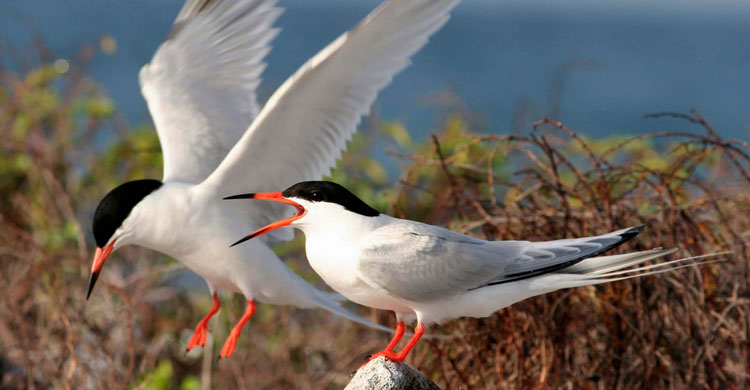AEWA Launches New Partnership with Conservation Evidence

Roseate Tern (Sterna dougallii) © US Fish and Wildlife Service
Bonn, 14 December 2017 - The UNEP/AEWA Secretariat is proud to launch a new partnership with the information resource initiative, Conservation Evidence. Based at the University of Cambridge, UK, with collaborators and advisers in all continents of the world, Conservation Evidence is a free, authoritative information resource designed to support decisions on maintaining and restoring global biodiversity. The idea is to give busy conservationists access to the very latest and most relevant ecological knowledge to support their policy or management decisions.
Based on the summarized evidence, expert panels are asked to assess the effectiveness of conservation interventions, from using mowing techniques to reduce meadow-breeding birds mortality, to restoring wetlands. More information about Conservation Evidence and its potential to inform conservation-related decisions can be found on the AEWA website.
Links will shortly start to be added on the AEWA species pages to the relevant Conservation Evidence search results, which will show the studies used for testing conservation interventions for particular species. For example, a search for the Roseate Tern yields nine studies, from adding nest boxes to painting eggs with methiocarb to deter predators.
Bird data are currently available up to 2010. However, an update is foreseen in the coming months, so it will be worth checking species pages for further evidence at regular intervals.
This new partnership has the potential to lead to more successful conservation interventions for AEWA species. Much conservation relies on anecdote, personal experience, guesswork, and trial-and-error. While these methods can lead to valuable outcomes for conservation, they are undeniably inefficient, as results gained by individuals or small groups are often not widely shared.
By providing bird conservationists throughout the African-Eurasian flyways with the scientific evidence for what works - and what does not work - to conserve their species, conservationists can put their limited time, money and resources into interventions that have the highest chance of success.
There will obviously be knowledge gaps, which when identified will hopefully inspire conservationists and conservation scientists to try and fill them, by testing and/or sharing what they are doing to save species and habitats.
Conservation Evidence is a valuable resource with a great deal of potential for users willing to invest a little time in learning how to check available studies and explore the database to get impulses for potential conservation actions.
Where the evidence for an intervention is sparse, conservationists are encouraged to devise tests or studies to assess its effectiveness; these can then be published in the online practitioner journal run by Conservation Evidence.
In this way, conservation decisions can be made easier and ultimately more effective, which is one step closer to securing the favourable conservation status for AEWA species.
Last updated on 14 December 2017


